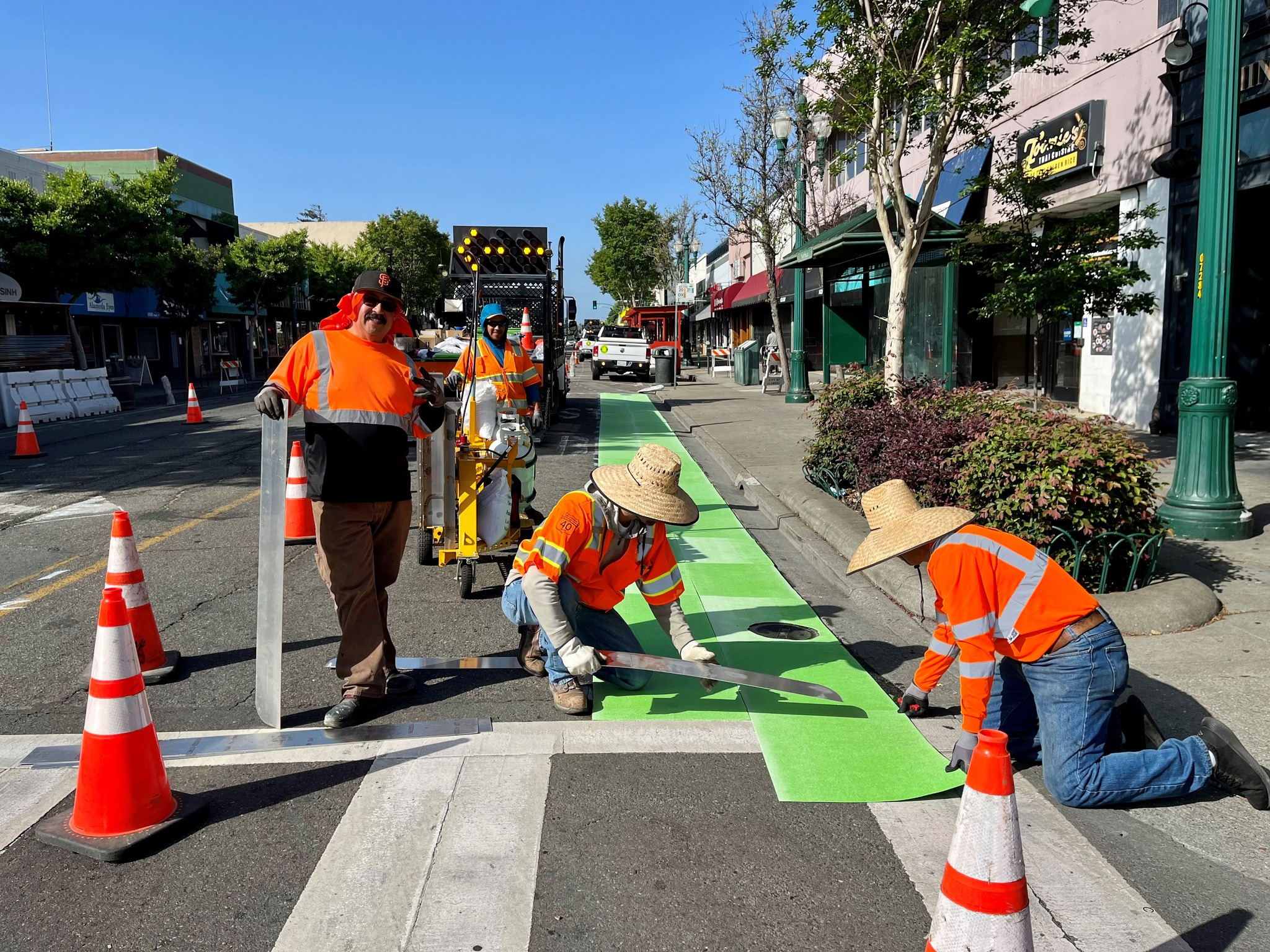Crews were out on Park Street in Alameda this week installing unprotected, paint-only bike lanes.
"In the [lead] image the green thermoplastic is being placed where the bike lane goes through a bus stop. These will not be separated bike lanes," confirmed Alameda's Brian McGuire. "This will be a similar design to the several blocks of bike lanes that were recently added to Webster Street between Taylor and Lincoln."
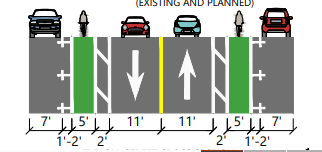
On Wednesday afternoon, a BMW and a Prius were encroaching on the bike lane on Webster. Clearly, the new unprotected bike lanes are acting just like every other unprotected bike lane in the world (see image below).
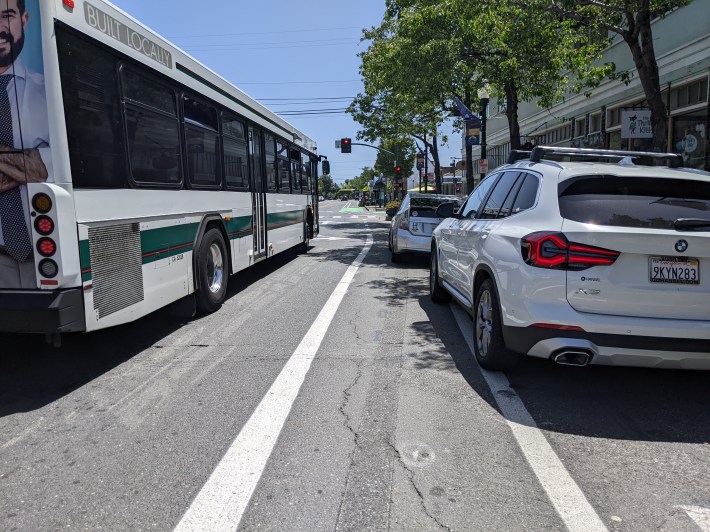
The driver of the Prius, pictured above, was inside the car texting.
"Yeah, not ideal," wrote Bike Walk Alameda's Denyse Trepanier in an email to Streetsblog. "Bike Walk Alameda isn't opposed to the painted lanes (better than nothing, which is what we had), but honestly, we don't even consider this a real bike project."
Streetsblog readers may recall that during the pandemic, Alameda created curbside "dining lanes," also dubbed "commercial streets," for eateries/parklets on its commercial corridors to help local merchants. Below is a photo of one in July of 2020 as the city was prepping the street for the parklets (read more about Alameda's "dining lanes" in Streetsblog, or on the Alameda City "Commercial Streets" web page). Alameda basically created the start of curbside protected bike lanes.
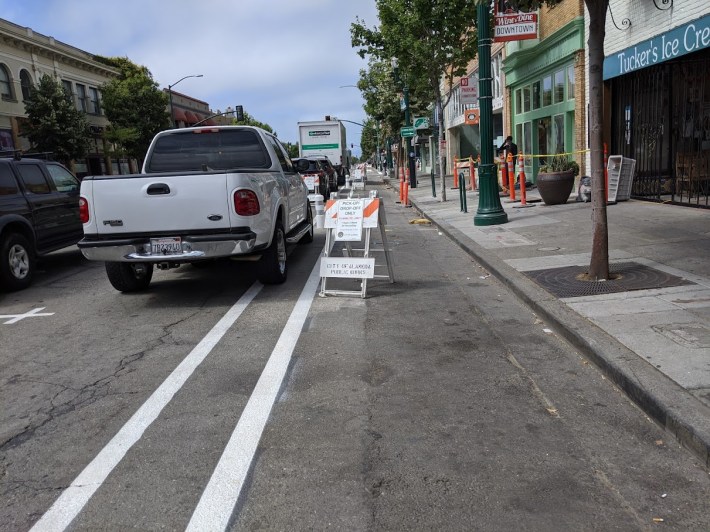
So why didn't Alameda just finish what it had inadvertently started and add protected bike lanes with this new project? Streetsblog reached out to the city multiple times to try and answer that question. Readers can judge if they're satisfied with the answers:
"Alameda’s configuration was not like Telegraph in Temescal where parklets were in the parking lane away from the curb with bike lanes at the curb (and diners and staff crossing a bike facility)," explained McGuire. "The way Park Street and Webster Street streetscapes were built some many years ago included curb extensions at corners, bus stops, and mid-block [crossings]. Even if parklets weren’t at the curb, a bicyclist attempting to seek refuge between the floating parking and the curb would be forced back into traffic probably every 100 feet."
"The goal was to clean up the parking/parklets/barricades/flex posts on the street AND, significantly, to keep the two travel lanes (with left turn pockets), and not go back to the pre-pandemic four lanes on both of these streets (which some people still would desperately like us to do)," wrote Alameda's Senior Transportation Coordinator, Rochelle Wheeler. "This left us with some extra space, and we decided the best use was bike lanes, even if they can’t be protected."
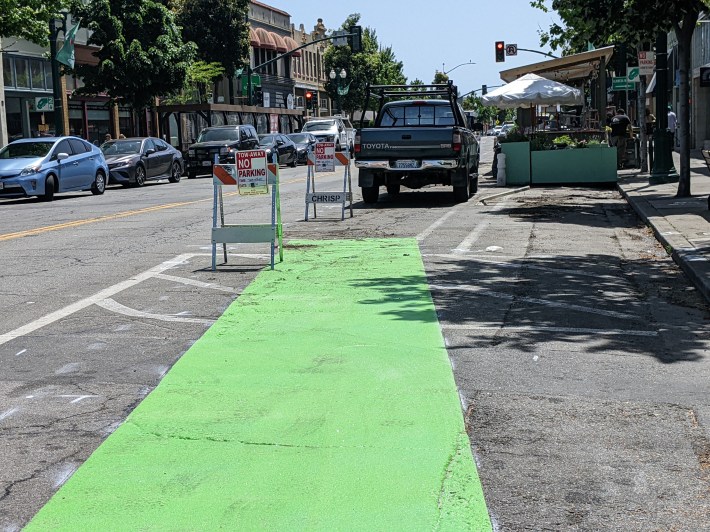
"The long term plan, in our Active Transportation Plan, is to add low-stress bikeways on Webster, and on Park St. or Oak St. That will take much study and planning, and much funding," added Wheeler.
In Streetsblog's view, these explanations, to be frank, don't make much sense. If there were two motor vehicle travel lanes in each direction, and now there's one in each direction, there's room for a protected bike lane. Maybe the bulbouts present a design challenge on Webster, but that doesn't explain why there can't be parking protected bike lanes on Park.
This all echoes the explanations SFMTA made for not extending protected bike lanes on Valencia (in the end, that was always about parking). And while McGuire correctly points out that Telegraph in Oakland, which has parking protected bike lanes, has a different design from Park or Webster, there are also plenty of examples of where protected bike lanes wrap around parklets. Take the Four Barrel Coffee parklet, also on Valencia, pictured below. It seems likely most cyclists would rather ride around a stationary parklet in a protected bike lane than struggle to get around a double-parked car that can door them or start moving at any moment.
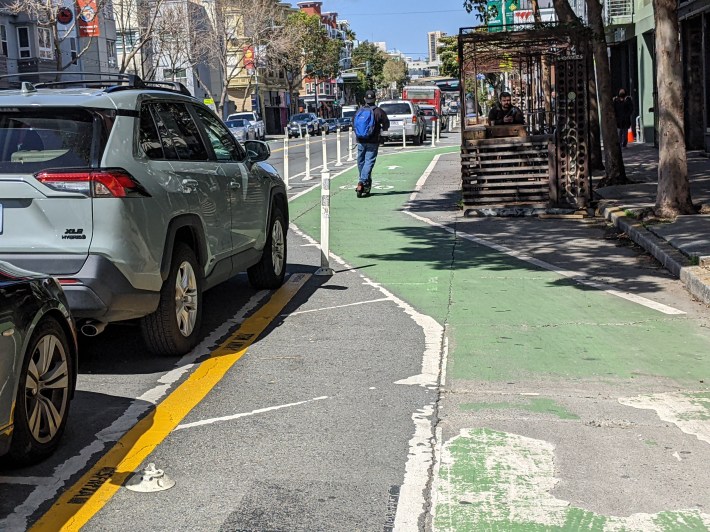
So is this really about merchants and their fanatical fixation on parking, as it was on Valencia? Anybody can go into Google Streetsview and look at the satellite image of the Park Street corridor—there are surface parking lots directly behind the shops on both sides of the street up and down the length of the street. There's also a gargantuan, never-full parking structure.
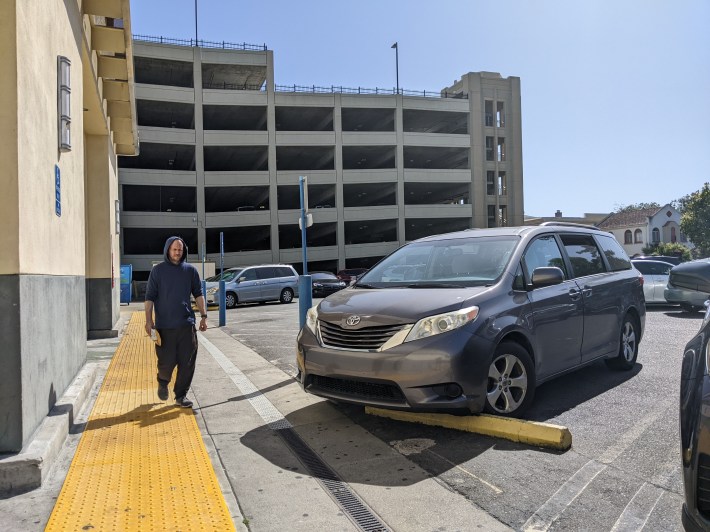
Wheeler's funding explanation doesn't make much sense either. They're spending the money to reconfigure the street—why not do it right? In the long run, if the goal is to make Alameda safe and inviting to cycle everywhere, it is going to cost much more to move the parking back to the curb and then reconfigure the street yet again in a few years for protected bike lanes. There's also the very real possibility that these unprotected lanes are going to get someone killed.
Alameda is doing some great bike lanes in its new "The Point" development, but this work on Park and Webster is going to generate the same conflicts and hazards as every other striped lane in a merchant corridor from Piedmont Avenue to Valencia to Polk. How many Tess Rothsteins and Maia Correias have to die in dooring crashes before Bay Area cities stop accepting door-side lanes as an acceptable solution under any circumstances?
